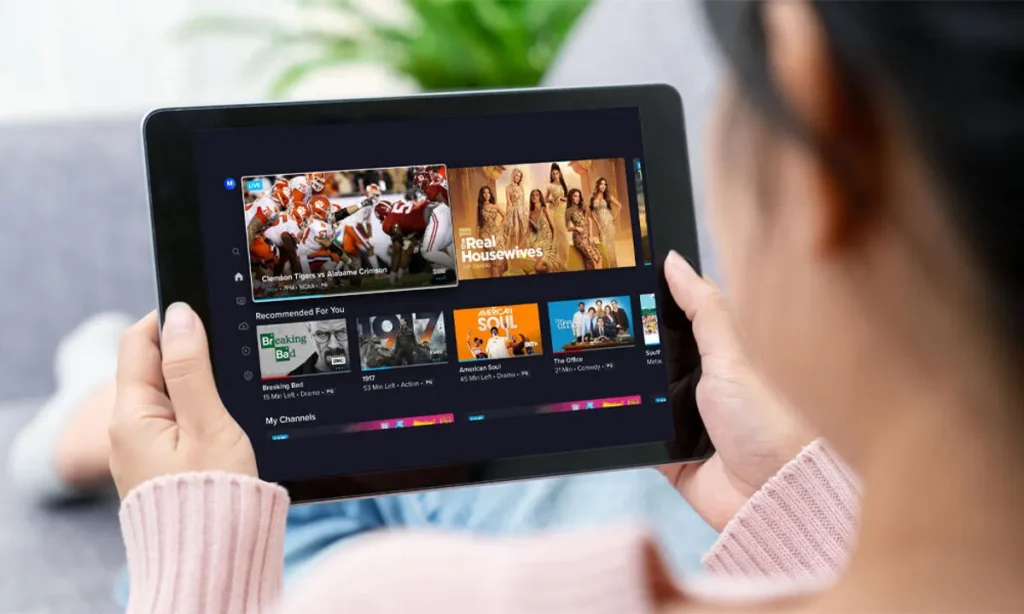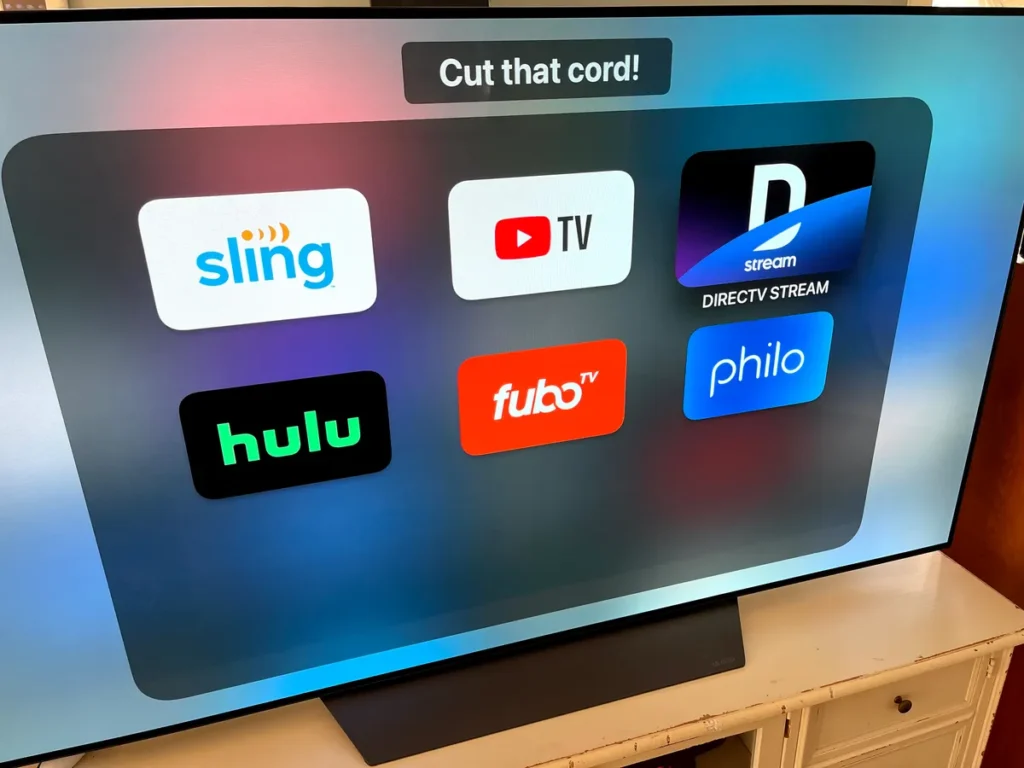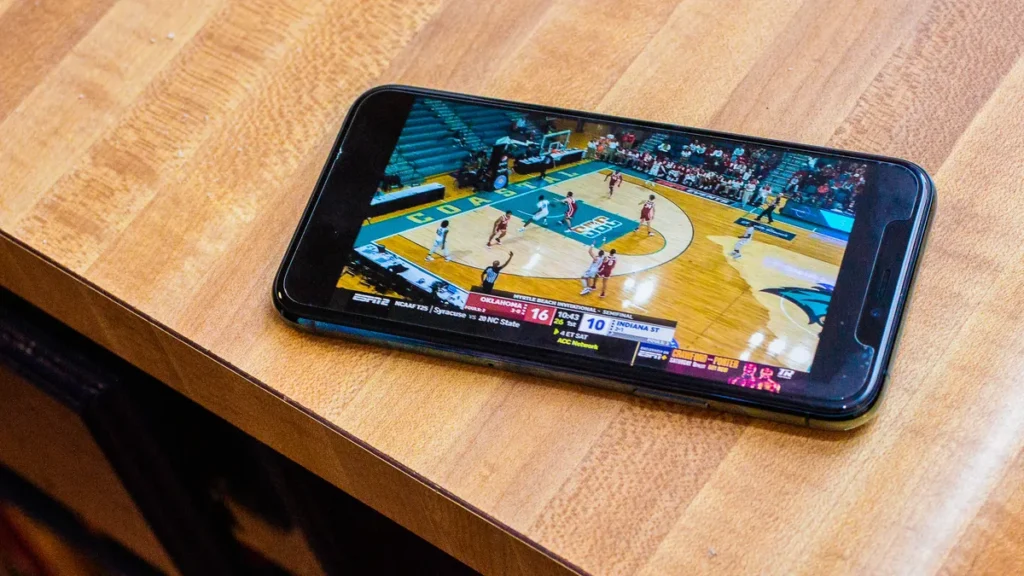Streaming services like YouTube TV, Hulu + Live TV, and Sling TV allow you to watch live sports, news, and primetime shows without a cable subscription. These platforms are designed as cable replacements, letting you browse popular live channels over the internet—unlike on-demand services such as Netflix. For a fixed monthly fee, you get access to live TV, including sports and news, and most of these services also offer unlimited DVR, so you can record shows and watch them later.
But can they actually save you money?
It depends. While they offer the flexibility of no contracts and streaming on various devices (like phones, smart TVs, and streaming sticks), some services are now nearly as expensive as traditional cable. Prices are climbing: YouTube TV now costs $83, DirecTV is at $87, Fubo starts at $80, and Hulu + Live TV is also $83. Adding to the evolving landscape, Fubo and Hulu recently announced a merger, pending approval.
This ever-changing world of live streaming continues to evolve—both in features and in pricing. Still, if you’re ready to ditch the cable cord, it’s worth exploring these internet-based alternatives.
Want to Save Even More?
Check out the Best Free TV Streaming Services like Plex, Pluto TV, and more for cost-free entertainment.
What’s the Best Live TV Streaming Service?
We’ve tested all the major live TV streaming platforms—including Sling TV, Hulu + Live TV, DirecTV, Philo, and Fubo. Our top picks? Hulu + Live TV for its comprehensive features and the budget-friendly Sling TV.
- Sling TV Blue: $46/month for a solid lineup of essential channels.
- Hulu + Live TV: $83/month, including the Disney streaming bundle.
Both services offer intuitive interfaces, live and on-demand content, and unlimited DVR capabilities.
Regardless of the service, most let you stream local and national news, live sports, and events from major networks like CNN, NBC, ESPN, and Fox. You can enjoy them across a range of devices.
Want to dive deeper? Compare each service’s channel lineup to find the one that fits your needs best.
Leading Live TV Streaming Services of 2025
Pros
- Unlimited DVR storage
- Access to Disney Plus and Hulu’s on-demand libraries
- Strong lineup of live TV channels
Cons
- Price increases
- YouTube TV offers a slightly better channel lineup
Why Hulu Plus Live TV Stands Out
If you’re looking for the ideal blend of live TV streaming and on-demand entertainment, Hulu Plus Live TV continues to be one of the best options available. While its channel selection may not quite match the breadth of YouTube TV, it’s very close — particularly with the recent addition of PBS and Magnolia Network.
What truly sets Hulu apart is its rich on-demand content library. From original exclusives like Shogun and Only Murders in the Building to a vast collection of broadcast series, Hulu offers a depth of programming that few competitors can match.
Priced at $83/month, Hulu Plus Live TV includes:
- Unlimited DVR
- The Disney Bundle (ad-supported) — Hulu Basic, Disney Plus, and ESPN Plus
For those seeking an ad-free experience, the bundle upgrade is available for $96/month.
User Experience
The Hulu interface is intuitive and well-organized, making it easy to discover content across genres. With unlimited DVR, you can store as many shows and movies as you’d like. One minor downside: if you want to start recording a program you’re currently watching live, you’ll need to exit to the guide to activate the record feature.
Latest Update
In January, Hulu announced a merger with Fubo, aiming to resolve legal disputes over the Venu Sports streaming service. The merger still awaits regulatory approval, with no official completion date yet.
Bottom Line
Hulu Plus Live TV delivers excellent value by combining live television with an unmatched on-demand catalog. While it lacks a few key channels — including AMC, BBC America, and NBA TV — it still offers a compelling package that’s hard to beat for most viewers.
Our Process for Evaluating Live TV Streaming Services

Our rankings are based on a combination of each service’s review score and several key criteria: platform availability, user experience, features, cost, and channel selection. We test every app on multiple platforms—Android, iOS, Apple TV, Google TV, and web browsers—and make note when certain features are missing from specific platforms.
Design
We evaluate each service’s interface for ease of use and intuitive navigation. This includes how simple it is to find your favorite content or set up a recording. The design of the program guide plays a big role in overall usability.
Content
The value of a live TV streaming service heavily depends on its channel lineup. We assess the availability of major networks, sports packages, add-on options, original programming, and the quality of its content library.
Value
Streaming services fall into three pricing categories: free, budget, and premium. Budget options like Philo and Sling TV are more affordable, while premium services like YouTube TV start at $80+. We consider how well each service balances price with features and content to determine overall bang for your buck.
Features
We look closely at advanced features like 4K HDR, cloud DVR, simultaneous streams, and unique offerings such as DirecTV’s “channel flipping” that mimics traditional cable navigation.
Services We Also Tested
Philo
Priced at $28, Philo provides a mix of popular channels focused on lifestyle and reality programming, including AMC, Comedy Central, Nickelodeon, and Magnolia Network. However, it lacks local stations, sports networks, and major news outlets (aside from Cheddar and BBC News). The service includes unlimited cloud DVR and optional add-ons like Epix and Starz. While Sling TV offers a better all-around experience, Philo may be a good fit if it includes everything you watch.
Fubo
Fubo stands out for sports fans, offering an impressive channel lineup and deep NFL coverage including NFL Network and RedZone (with add-on). It also appeals to NBA, MLB, and NHL fans in select regions via regional sports networks (RSNs). However, it’s missing key Turner channels like CNN, TNT, and TBS, which is a big drawback—especially for sports. The 2024 price hike (plus added RSN fees) makes YouTube TV or Hulu + Live TV a better choice for many viewers.
Looking Beyond the Big Names
While this list covers some of the most popular live TV streaming options, it’s not exhaustive. If you’re hunting for free TV, there are several ad-supported services worth exploring. And don’t forget about OTA (over-the-air) broadcasts—just grab an antenna and you’re good to go.
Key Considerations When Choosing a Cord-Cutting Live TV Service

If you’re after a cable-like experience without the baggage of long-term contracts and bloated bundles, live TV streaming services offer a flexible and modern alternative. You can cancel anytime, switch providers with ease, and choose from a range of options—from budget-friendly packages like Sling TV to feature-rich services such as Hulu + Live TV.
To help you decide which service best fits your needs, start by asking yourself a few key questions:
- Does it carry your must-have channels?
- Are local networks like ABC, CBS, NBC, and FOX available in your area?
- Is the cloud DVR reliable and easy to use?
- Is the interface intuitive and user-friendly?
- Can it support enough simultaneous streams for everyone in your household?
- Is your internet speed fast and stable enough for streaming?
Choosing the Right Channel Lineup
Each streaming service offers a unique mix of channels. Your first priority should be ensuring the service includes your favorite cable networks and essential channels. Local stations—such as ABC, CBS, NBC, and FOX—are especially important, but not every platform offers all of them in every region.
Keep in mind that channel availability can change. Networks often renegotiate contracts, and services may lose access to certain channels. This has happened before with regional sports networks (RSNs) and even major providers like Disney and YouTube TV. Streaming platforms are always in flux, and it’s worth staying updated on any changes.
Pricing Tiers: Budget vs. Premium
Live TV streaming services generally fall into two categories:
- Budget Tier ($25–$50/month):
Limited or no local channels, fewer features. Examples include Philo and Sling TV. - Premium Tier ($80+/month):
Includes local channels, more robust DVR options, and broader channel selections. Examples include YouTube TV, Hulu + Live TV, and DirecTV Stream.
Most services include cloud DVR functionality, but the quality and limitations (like storage hours or ad-skipping) vary by provider.
Simultaneous Streaming: How Many Screens?
If you plan to stream on multiple devices—say, your living room TV and a bedroom tablet—you’ll need a service that supports multiple simultaneous streams. For instance:
- Sling Orange allows only one stream at a time.
- Other platforms offer two, three, or even unlimited streams, depending on the plan.
Make sure the service can handle your household’s usage patterns to avoid frustrating interruptions.
Internet Speed: The Hidden Cost of Streaming
Streaming works best with reliable high-speed internet. If several people are watching at once, especially in HD or 4K, you’ll need a connection of at least 100Mbps. This typically costs $50–$60/month, which can cut into the savings you hoped for when moving away from cable. It’s a cost worth considering upfront.
When Streaming Might Not Be the Best Fit
Streaming TV is flexible and modern—but it’s not perfect. There are a few drawbacks to be aware of:
- Limited Channel Access:
Not all services carry every network. For instance, PBS is only available on a few platforms like YouTube TV, DirecTV, and Hulu + Live TV. - Inconsistent Sports Coverage:
While most services carry ESPN and local networks for NFL games, following your favorite MLB or NBA team may require access to specific regional sports networks (RSNs). These aren’t consistently offered across platforms. - Geographic Blackouts:
Even if your area is supposed to get certain channels, you might be blacked out due to IP address issues. This is especially common with regional sports content. A sports-friendly VPN can often resolve this, though it adds another layer of complexity.

Streaming Delay and Audio Quality: What to Expect
Live TV streaming services typically run a few seconds to over a minute behind traditional cable or satellite broadcasts. That means real-time updates—like sports scores or major plays—may reach you via Twitter, app notifications, or even texts from friends before you see them on screen.
When it comes to audio quality, there’s another trade-off. If you’re accustomed to 5.1-channel surround sound from cable or over-the-air (OTA) broadcasts, you might be let down—YouTube TV is currently the only live TV streaming service that consistently supports surround sound on live content. Most other platforms deliver stereo audio only during live broadcasts, although 5.1 surround may be available on select on-demand programming.
Frequently Asked Questions
What are the best live TV streaming platforms in 2025?
In 2025, top-rated platforms include YouTube TV, Hulu + Live TV, Sling TV, Fubo, DirecTV Stream, and Philo, each offering unique combinations of channels, pricing, and features.
Which streaming service offers the most channels?
YouTube TV and DirecTV Stream tend to offer the largest channel lineups, including local networks, sports, news, and entertainment. However, specific channel offerings may vary by region.
Can I watch local channels with live TV streaming services?
Yes, services like YouTube TV, Hulu + Live TV, and DirecTV Stream provide access to local ABC, CBS, FOX, and NBC stations in many areas. Always check availability by ZIP code.
Are there any free live TV streaming options?
While premium services dominate the market, platforms like Pluto TV, Tubi, and Xumo offer free, ad-supported live TV channels across various categories.
Which service is best for sports fans in 2025?
Fubo is a top choice for sports enthusiasts due to its strong lineup of national and regional sports networks. YouTube TV also includes NFL Network, ESPN, and the RedZone add-on.
Do these services support cloud DVR?
Yes, most live TV platforms include cloud DVR functionality. YouTube TV offers unlimited DVR storage, while others like Sling TV or Philo may offer limited space or charge extra for upgrades.
How much do live TV streaming services cost in 2025?
Prices vary widely. Budget services like Philo start around $25–$30/month, while premium services like Hulu + Live TV or YouTube TV range from $75 to $90/month, depending on add-ons.
Can I stream on multiple devices at the same time?
Yes, but the number of simultaneous streams varies. YouTube TV allows up to 3, while Sling Orange only permits 1. Some services offer upgrades for more streams.
What kind of internet speed do I need for smooth streaming?
A stable connection of at least 25 Mbps is recommended for HD streaming. Households with multiple users or 4K streams should aim for 100 Mbps or higher.
Are there any contracts or cancellation fees?
No. All major live TV streaming platforms operate on a month-to-month basis, meaning you can cancel anytime without penalties.
What devices support live TV streaming apps?
Most platforms are compatible with smart TVs, Roku, Amazon Fire TV, Apple TV, Chromecast, as well as iOS, Android, and web browsers.
Will live TV streaming replace traditional cable in 2025?
For many viewers, yes. Live streaming offers more flexibility, lower costs, and customization, making it a strong alternative to traditional cable or satellite services.
Conclusion
As we move deeper into the era of cord-cutting, live TV streaming platforms in 2025 continue to redefine how we watch television—offering flexibility, customization, and cost-effective alternatives to traditional cable. Whether you’re a sports fanatic, a news junkie, or just want access to your favorite entertainment channels, there’s a service tailored to your needs.
From budget-friendly options like Philo and Sling TV to feature-rich experiences on YouTube TV and Hulu + Live TV, the choices are more powerful and diverse than ever. Just remember to consider what matters most to you—channel selection, DVR features, simultaneous streams, or local coverage—before subscribing.


